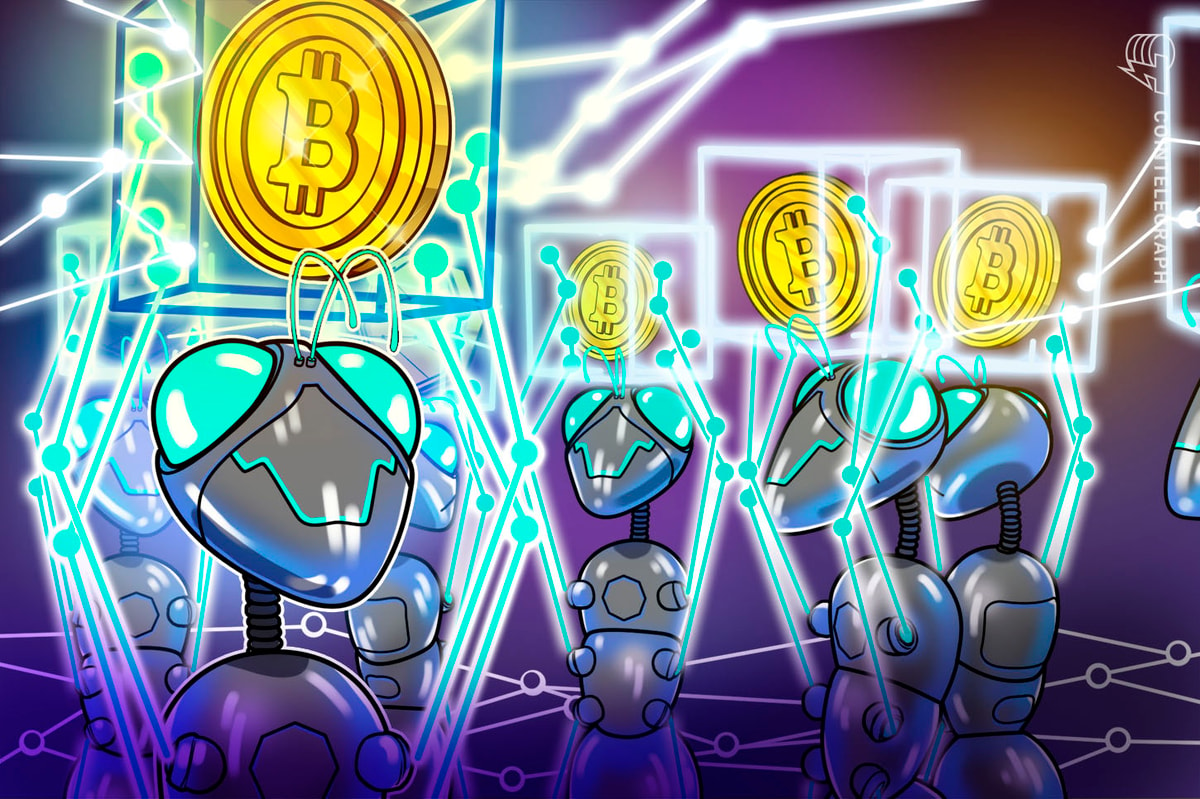Gideon Nweze, the founder and CEO of the newly launched Digital Bitcoin Artwork and Property (DIBA) nonfungible token (NFT) market, believes there’s an alternate solution to deliver NFTs to Bitcoin that doesn’t impression block area and transaction charges.
Nweze just lately put this perception to the check, launching a beta model of his NFT market on Might 19. Quite than utilizing Ordinals, it leverages the RGB Sensible Contract Protocol to mint NFTs on prime of the Bitcoin (BTC) community.
Because the introduction of Ordinals Protocol in January, Bitcoin-based NFTs and tokens have exploded in popularity, with greater than 9 million whole “inscriptions,” in response to data from Dune Analytics. Nevertheless, the rise of Ordinals has additionally invited its fair proportion of controversy, together with its purported impression on block area and transaction charges.

However, the RGB Sensible Contract Protocol comes from 2016, initially launched because the “BHB Community” by Bitcoin developer Giacomo Zucco after which relaunched in 2019. It permits encrypted transactions with Lightning Community performance, permitting customers to mint NFTs with out taking over large quantities of area on the community.
Nweze informed Cointelegraph that it’s “extraordinarily advanced” however primarily works the identical as a layer-2 scaling resolution on Ethereum, and claims it might clear up Bitcoin’s newfound blockspace issues.
Property minted by the use of the newly-introduced Ordinals Protocol have attracted widespread criticism for being inefficient and “clunky.” Nweze says it is because Ordinals inscribe belongings straight “into” the Bitcoin blockchain, whereas RGB layers the transactions on prime of the community.
“If I’m constructing a home, I don’t put all of the storage inside the muse. I construct the rooms and the storage in layers on prime of it. Ordinals are like making an attempt to cram every part into the muse, whereas sensible contracts put every part within the flooring above it.”
It’s value noting that the RGB Protocol is barely able to minting NFTs, not BRC-20 tokens.
Nevertheless, there’s one other protocol referred to as Trustless Laptop, which leverages sensible contracts to mint BRC-20 tokens. As reported by Cointelegraph Journal, the project is not a layer 2, as a substitute, it’s a “protocol inside a layer 1” that makes use of sensible contracts to scale back token bandwidth by 80% to 90%.

Nweze’s statements fall in step with these of Muneeb Ali, the CEO of Belief Machines, who defined in an interview with Cointelegraph how the Ordinals hype might assist Bitcoin in attracting extra builders and capital to layer-2 options.
Ali claimed that within the absence of scaling options, excessive charges and a congested community might decelerate widespread Bitcoin adoption in the long run.
Associated: 13 years after first Bitcoin purchase, layer-2 solutions struggle to gain traction
Whereas a lot of main Bitcoin advocates, together with Jan3 founder Samson Mow, have claimed that the Ordinals and BRC-20 hype will blow over in “a matter of months.”
Nevertheless, Nweze is satisfied of the longevity of protocols and belongings being created on the Bitcoin community, due largely to builders starting to leverage the full potential of the Taproot upgrade.
For DIBA’s RGB21 UDAs, the place contract information is stored off-chain, we expect https://t.co/dGSwshhcw5 is an ideal match for storing not solely contracts but additionally excessive definition content-addressable media.
We count on to unravel for information permanence in 3 ways:
1) Storage debt markets,…
— Hunter ₿eaṩt (@cryptoquick) May 22, 2023
“All the things we [DIBA] do, makes use of Taproot. As a result of Taproot was designed to scale back block area, every part we do takes up minimal block area, as a result of the dimensions of a Taproot transaction is way, far smaller than a standard Bitcoin transaction,” he defined.
It isn’t simply pure improvement and code that has Nweze enthusiastic about NFTs on Bitcoin, it additionally comes down largely to tradition and shared human expertise. “Artwork and music is what makes the human coronary heart sing, so if we will use this to introduce extra folks to Bitcoin, and to Lightning, then we’re profitable,” he stated.
Journal: Ordinals turned Bitcoin into a worse version of Ethereum — Can we fix it?

